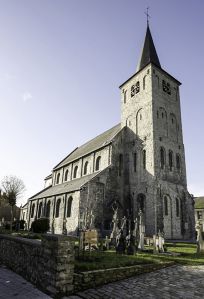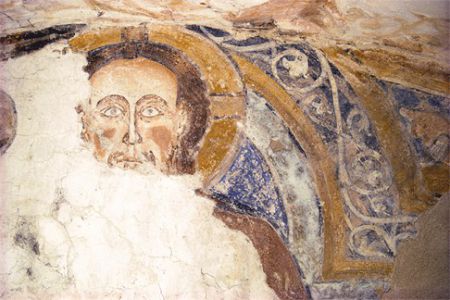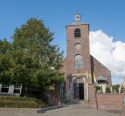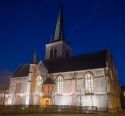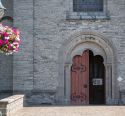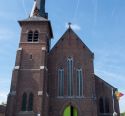Basilica | 998-1024 | Romanesque | Catholic Church

Map
Opening hours
01 January - 31 December
Mon 10.00 - 17.00
Tue 10.00 - 17.00
Wed 10.00 - 17.00
Thu 10.00 - 17.00
Fri 10.00 - 17.00
Sat 10.00 - 17.00
Sun 10.00 - 17.00
Description
Thanks to scientific research, we now know that only one monument from the 1000s was preserved in Ename: the Saint Lawrence church. This building received a thorough restoration between the years 2000 and 2002.
The church, founded by Count Herman of Verdun, is basilicalike in style with an eastern- and western choir. The eastern choir with two altar levels and rich incidence of light really caughts one’s attention. Blind arches decorate the interior and exterior of the building. The two choirs remind us of the grand reich churches of Hildesheim, the blind arches of buildings in Ravenna, the berth of the Ottonian emperors in Italy. The patron saint Saint Lawrence, a favorite saint of emperor Otto I, refers to the national authority.
KIKIRPA : Photo-library online
Photos
Remarkable elements
God in majesty
Although only partially preserved, it was on the archfield of the eastern choir that a marvelous God in majesty was retrieved. The mural in Byzantine style is of exceptional artistic value. Traditionally, the statue of Christ is surrounded by symbols of the four evangelists. In Ename, only the eagle was preserved, the symbol of John. Christ appears here as an authoritarian, sovereign king. And to highlight this aspect even more, one used as a raw material for the background one of the most expensive raw materials, that is, blue lapis lazuli, a material that presumably originated from Afghanistan.
Mary with Child
A basic notion in Chistian religion, is the incarnation of Christ. The general known image of Mary with Child refers to this fundamental religious belief. In a blind arch of the western choir one retrieved a monumental mural of such an Our Lady depiction. Her mantle and headpiece are bright red, with which the high status of Mary is indicated. Although only preserved to a limited extent, the representation shows something remarkable. What we see, is not a mother who is holding her child close to her. No, it is a very distant Mother of God. She is standing and carrying the baby that is Christ solemnly on her left arm. Both are not looking each other in the eye. Why?
Murals
In two window alcoves of the eastern choir, one retrieved the eldest murals. The statue was deeply disturbed by later interventions. Still, we can see two lockets painted in red. Central every time, is the bust of each figure that respectively carries two loaves of bread and a big fish. In its simple beauty, the painting refers to a remarkable miracle where Jesus provides a crowd of people with the meager stock of five loaves of bread and two fish by multiplying them thousand- fold.
Saint Lawrence
The patron saint of this church is Saint Lawrence. Lawrence was one of the seven deacons of Rome who gave his life entirely as a martyr for the poor. He would have been born in Spain and would have arrived in Italy at a young age. During the persecution of emperor Valerian, both Lawrence and the other deacons together with the holy father were captured. While the others were summarily killed, they took Lawrence for interrogation and torturing. He was flogged and roasted and died on August 10th of the year 258.
Lawrence was honored as a patron saint for the poor and the librarians, because as a deacon he was entrusted with the care of books.
Saint Lawrence altar
After the iconoclasm catholicism restored itself. Three new altars were added to the church, amongst which a Saint Lawrence altar. The current Saint Lawrence altar dates back to 1907 and depicts two scenes from the life of Saint Lawrence, the deacon of Rome who died the death of a martyr on August 10th of the year 258.
To the left, one can see a depiction of how the holy Saint Lawrence was handing out church possessions to the poor, to make sure that the emperor of Rome couldn’t confiscate them. To the right, one can see Saint Lawrence dying a martyr’s death in the fire. Because of this reason, Saint Lawrence is often depicted with a glowing grid, the object by which he was tortured.







